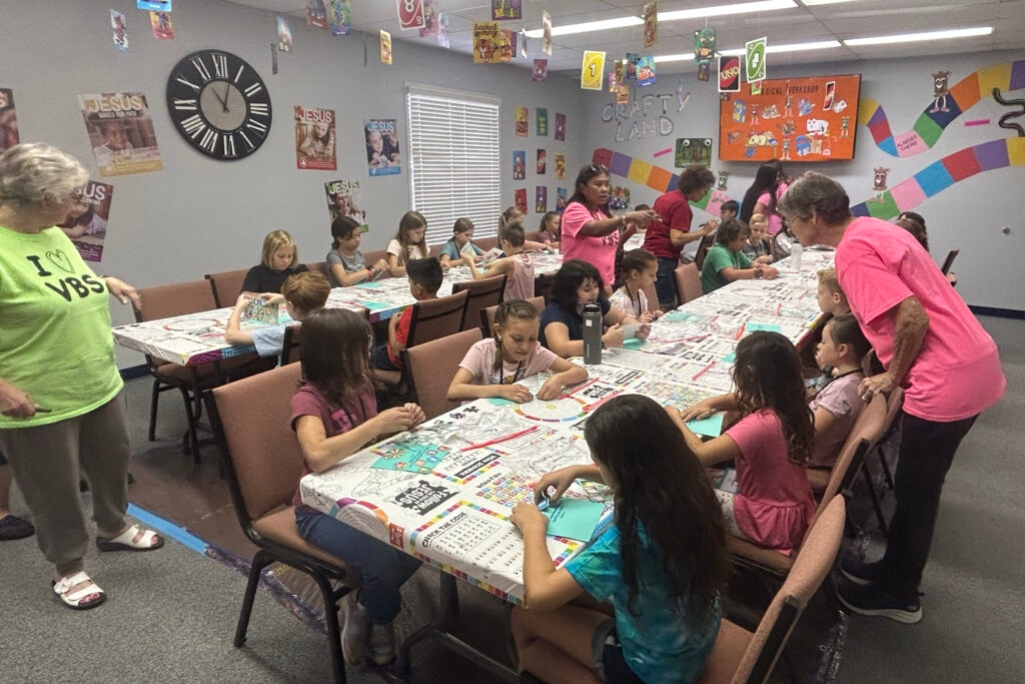
LANSING, Mich. (BP) – Sam Black walked outside his Florida home decades ago and saw his older brother and a friend reading a magazine sideways.
“That didn’t make any sense. How can you read sideways?”
The teenagers turned the magazine around and exposed a 10-year-old Black to pornography, a centerfold of a nude woman that piqued Black’s curiosity.
“And though I grew up in a Christian home I didn’t step away,” Black said. “Dopamine focuses your attention when sexual cues are picked up. It can focus your attention very well. And all kids are naturally curious about what the opposite sex looks like naked. That’s normal.
“But,” Black said, “while that curiosity is normal, pornography – and especially today’s pornography – is often violent and so much more. It’s overwhelming for a child. But even just plain nudity, I stepped forward and I wanted a closer look.”
The early exposure, fueled by what Black describes as a violent and controlling hypocritical Christian childhood home, sent him spiraling into a pornography addiction that he didn’t understand or conquer until after he married.
Two-thirds of men and a third of women who regularly attend church say they struggle with pornography, Black said, sharing research from the National Library of Medicine that also aligns reduced church attendance and participation with pornography use.
Now 55, he helps churches provide a safe place for men and women to honestly confess pornography use and find grace-filled healing. Black is director of life change education for Covenant Eyes, an ecumenical, relationship-driven accountability ministry aimed at helping adults overcome pornography.
Black found healing through a church ministry his wife invited him to early in their marriage. While his path to addiction is common, Black describes his path to recovery as unique. Most pastors, he said, don’t have a good understanding of pornography addiction and how to lead victims to recovery.
“I really do have a great sense of empathy for pastors and ministry leaders on this in general,” he said. “Often there is not a safe place (at church) to have this conversation, so people feel a great deal of shame, especially something like pornography.
“I mean we have looked at (First) Corinthians 6:18 and Paul has warned us that when we sin sexually the sexually immoral person has sinned against their own body,” Black said. “We have used that as a warning, but we’ve not given anyone an opportunity to say, ‘This is the warning because Paul is not saying this sin is worse in God’s eyes; he’s divinely warned us that the effects of sexual sin are more damaging to the person in their mind, body and spirit.’”
Black describes sexual sin as a detonating bomb that impacts relationships, pointing out that pornography use is a major contributor to 56 percent of divorces in the U.S.
“Paul is begging us to pay attention to sexual sin,” Black said. “But we don’t stop with the warning. We help give people a pathway to freedom.”
Seminary training often does not address the issue of pornography, Black said. In preparing to write a new Covenant Eyes resource that releases in May, “The Healing Church: What Churches Get Wrong About Pornography and How to Fix It,” Black searched for churches that were ministering well to those overcome by pornography.
“Not just to be drawing from my own experience,” Black said. “I wanted to go out and find churches that were doing this work well, and show (other churches) the examples of that restorative process where they were creating safe places, or safe processes, that fit their denomination, that fit their theology (so that) in their churches they were bringing freedom to men and women and teens who were struggling deeply with pornography.”
Such struggles negatively impact the religious landscape and church ministries, research has found.
“There’s a direct correlation between pornography use by the individual,” Black said, “and reduced church attendance, diminished faith, increased religious doubts, less volunteerism.”
Black shared the study “Seeing is (Not) Believing: How Viewing Pornography Shapes the Religious Lives of Young Americans,” available at the U.S. National Institutes of Health’s National Library of Medicine.
“If pornography use weakens attachment to religion among young Americans,” researchers wrote in the abstract to the study, “as viewing pornography becomes more common with each generation, it may contribute to rising secularization among younger cohorts. Thus, to the extent that younger generations are increasingly exposed to pornographic materials, and to the extent that viewing pornography has a secularizing effect, these factors may shape the future landscape of American religion itself.”
Black has found churches that not only didn’t provide a safe place for people to discuss their struggles with pornography, but he found churches that punished believers for seeking help.
“I found many churches who literally kicked out people from their church, or especially (those involved in) any volunteer efforts. Not only was he stripped of any of his duties in the church,” Black writes of one man who asked his pastor for help, “but he was told that you can’t attend church unless you do so with your wife accompanying you. There were numbers of people, men and women, who just didn’t feel safe.”
Black described to Baptist Press a “spectrum of safety” varying among churches that spans from one extreme of accepting sinners without encouraging them to change, to the opposite extreme of denying that the person struggling has actually accepted Jesus as Savior.
“What we need is that center,” he said, “where it’s safe to come as you are, even Christians who are struggling, but it’s not OK to stay how you are.”
Children are being exposed to pornography as early as 6 years of age, Black said, when their brains are not fully developed and they are not able to reason rationally.
“There’s a lot to this that really makes it harder for a child to turn away,” Black said. After exposure, pornography can become a way of escape from life’s struggles that continues as a coping mechanism into adulthood.
“Children and teens learn to begin escapism at a young age, and that escapism follows through their adolescence and teen years, and then into their adulthood, often into their trade school or college, and then into marriage,” Black said. “And then when it comes into marriage, we’re like, ‘Oh, you’re not supposed to be doing this.’
“Well, they’ve been doing it for often a decade or more, and suddenly we’re just expected to shut that valve off that has been going full tilt for a while. But it has been ingrained in their mind, body and spirit, and so we need to address this struggle in mind, body and spirit as well.”
Before Black began his recovery journey, he used pornography as a panacea for whatever ailed him from childhood into adulthood.
“When I felt fear or frustration or anger, I didn’t even realize that I was using pornography as a dirty bandage for how I was feeling,” he said. “That would expand to things like boredom and I didn’t do well at school or something happened at school, or you name it. I didn’t feel good about myself, I could run to pornography.
“And I would carry pornography with me from middle school, to high school, through college, into my marriage.”
He was becoming agnostic when his wife invited him to a marriage class at a small church in their community.
“These people were not like any Christians I had met growing up,” Black said. “They would close the door and the facilitators would turn around and look at the class and smile real big, and say, ‘This is a safe place. What is said here stays here.’”
People told of personal struggles they were seeking to overcome and become more Christlike. There, Black was relieved to discover that pornography could be compulsive or addictive.
“From a secular perspective that meant evolution didn’t make me this way,” he said. “And from a religious perspective, God didn’t make me this way, and I didn’t have to stay this way.
“And with the support of men, good reading, a lot of understanding and growing, I began a pathway, a journey – that didn’t come overnight, but came with that kind of support – to live in freedom.”
(EDITOR’S NOTE – Diana Chandler is Baptist Press’ senior writer.)


